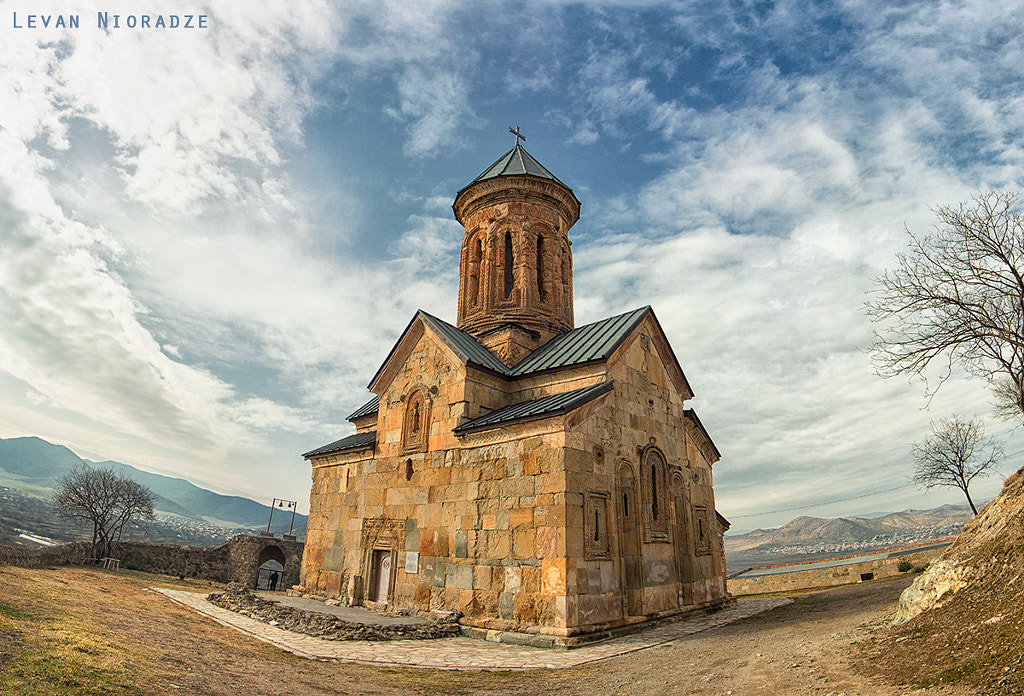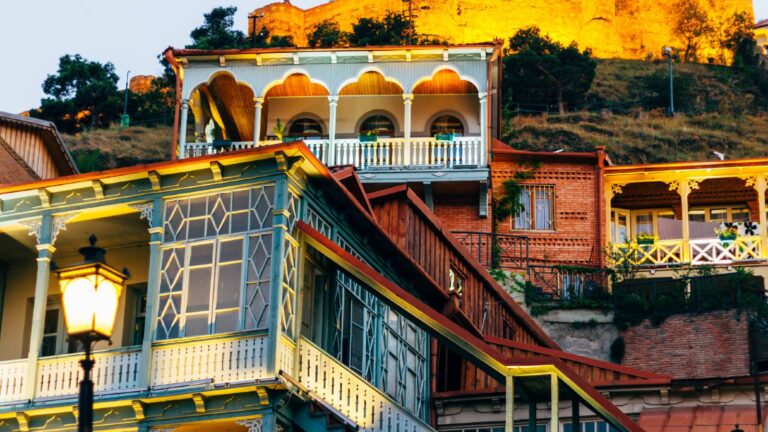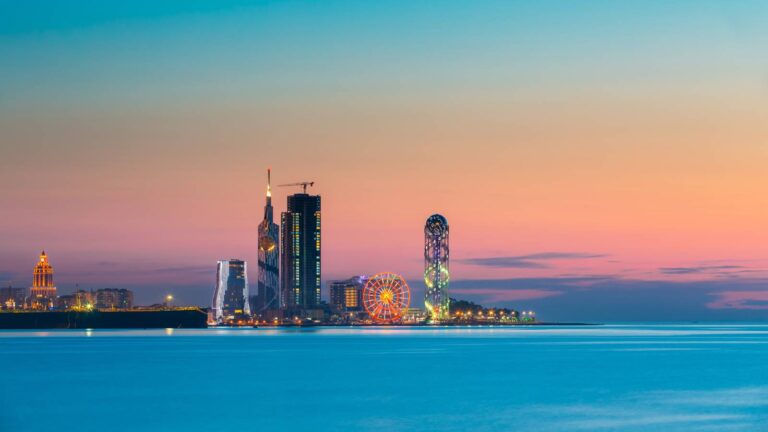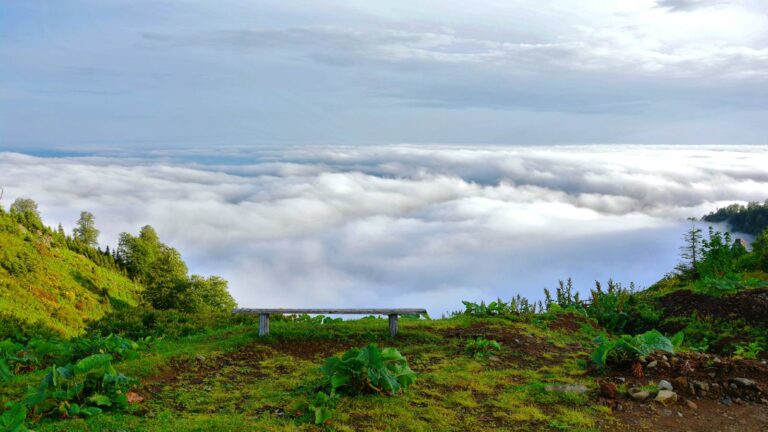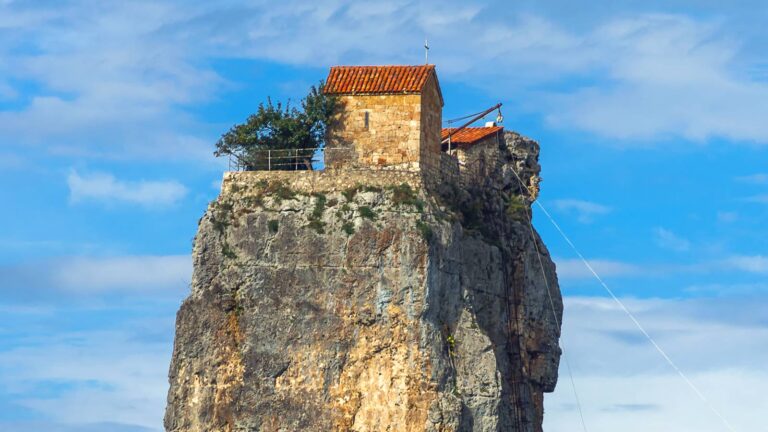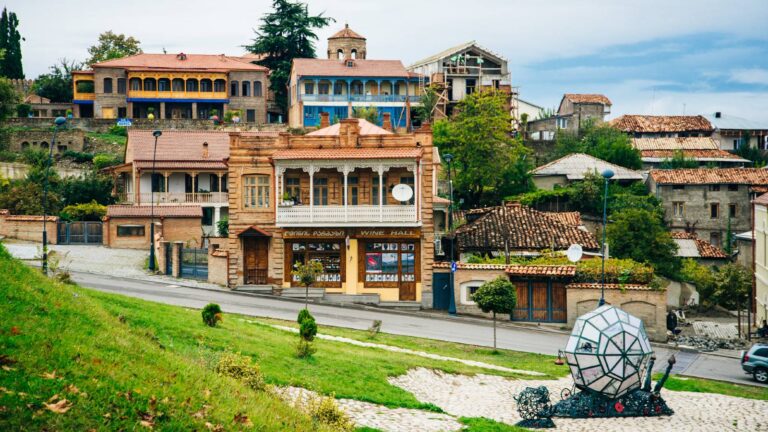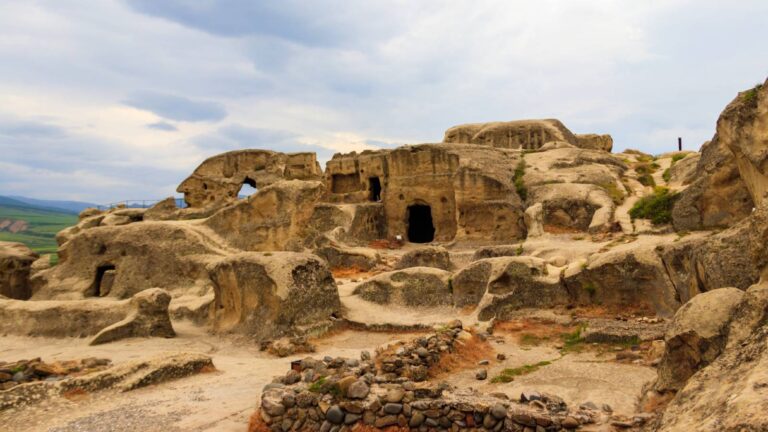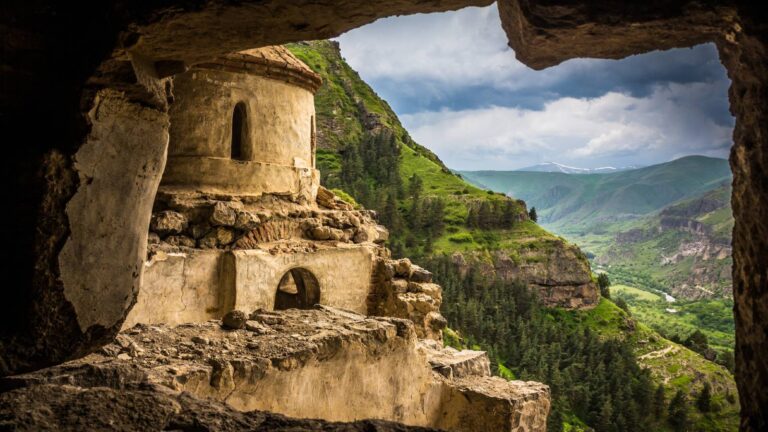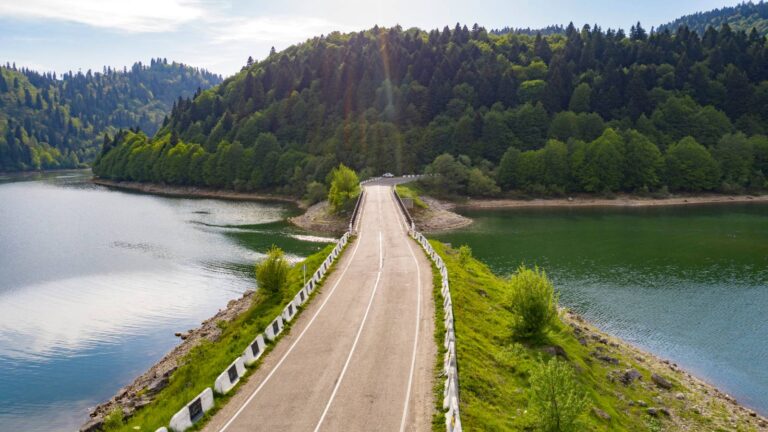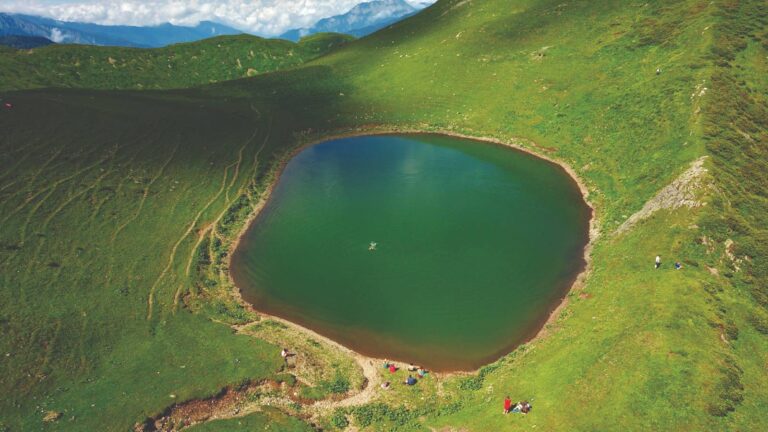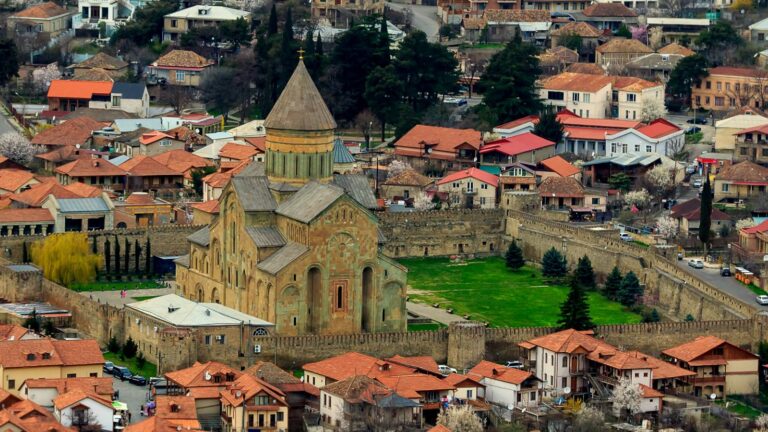You can arrive at Kvemo Kartli’s cities: Rustavi, Marneuli, Manglisi using public transports, like a bus or a mini-bus. If you choose a taxi or a private car, it’ll take about 1,5 hours of driving. Travel to western Kvemo Kartli generally requires a taxi or private car.
Gachiani, Rustavi, and Gardabani are all accessible by train via the once daily Tbilisi-Baku overnight train (none of these are final stops on any train routes). There is also a daily train to the Armenian border-town of Sadakhlo.
Kvemo Kartli is rich with its great culture, numerous archaeological sites, churches, monasteries, and castles. The archeological treasure-Dmanisi has been attractive worldwide.
The region has preserved the ancient graves, keeping the high-valued materials, including antique jewelry, pottery, and stories leading to Egyptian rituals.
Along with its rich cultural heritage, Kvemo Kartli is also distinguished by its natural beauty. You can find beautiful canyons, waterfalls, alpine meadows, and even colorful deserts in the region of Kartli.
Must-see places
- Dmanisi Museum-Reserve
- The urban archaeology of Samshvilde
- Bolnisi Sioni
- The fortress of Birtvisi
- Gokhnari Lodovani
- Kldekari Fortress
- Tsugrugasheni Church
- The monastery complex of Pitareti
- The monastery complex of Gudarekhi
- Hujabi Monastery
- Martkopi Monastery
- Manglisi Sioni
- The fortress of Khuluti
- Tejisi Church
- The national park of Algeti
- Gardabani Nature Reserve
- The canyons of Dashbashi
- The desert of Mravaltskaro
- Samsari ridge
- Bareti lake
- The mountain of Arjevani
- Kabeni waterfall
- Samshvilde Canyon
- The gorge of Khrami
- Khorkhebi Cave
The territory of Kvemo Kartli was settled by “Kartvelian tribes” since ancient times.
The region went through a lot since then, trying to survive the various invaders. In the XVIII century, during the Leki feudal lords’ invasion, Kvemo Kartli got gradually empty from the indigenous population. Most of the locals were sacrificed to the enemy; some escaped to the other parts of the country. This is the main reason why the ethnicity of this region is diverse. (what actually keeps it more interesting for the modern world.)
Kvemo Kartli was one of the hearts of spreading Christianity in Georgia. This explains plenty of churches and monasteries in this area. In addition to religious architecture, the place also kept the summer residences of some Georgian kings.
Kvemo-Kartli region is one of the most important cultural centers of Georgia. Populated over the centuries by countless diverse ethnographic groups, the area has preserved hundreds of monuments to visit. You can explore the cultural treasures dating 1.75 m-years, or more recent monuments from the 13th-century.
Kvemo Kartli is located in eastern Georgia, and it is bordered by the ridges of Trialeti, Javakheti, and Bambak-Yerevan. Kakheti borders it on the east, Shida Kartli and Mtskheta-Mtianeti on the north, Samtskhe-Javakheti on the west, Armenia, and Azerbaijan on the south.
Rustavi is an administrative center of Kvemo Kartli. It also includes six administrative units: Bolnisi, Gardabani, Dmanisi, Tetritskaro, Marneuli and Tsalka.
Kvemo Kartli is located in the semi-desert, arid subtropical, and mountainous alpine zones. The region is rich in lakes and water reservoirs, forests, and fields. The largest rivers of Kvemo Kartli are Mtkvari, Khrami and Algeti.
Economy of Kvemo Kartli is highly depending on Tourism. Agricultural production is also developed.

